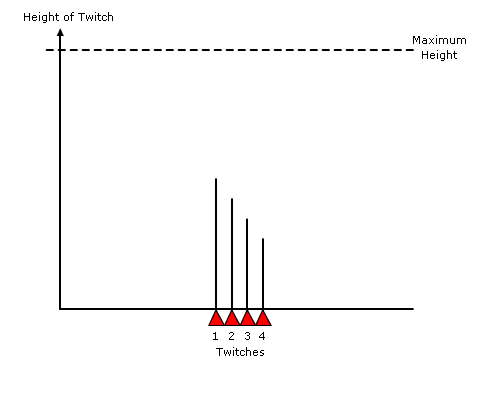The TOF
The Train of Four (TOF) describes four supramaximal stimuli, each with a duration of 0.1 msec, delivered at 2 Hz (Fig 1). A supramaximal stimulus is a current which ensures that all the fibres in the targeted peripheral nerve are depolarized, so that an indexed response can be achieved.
Typically a current >60 mA is sufficient.
From the TOF we get two pieces of information:
- The TOF count - this relates to the number of twitches seen
- The TOF ratio - this is the ratio of the fourth twitch height to the first twitch height, T4:T1. In the image the TOF ratio is 1:3

The TOF count
The TOF count gives a guide to the depth of non-depolarizing block. From the table below it can been seen that a TOF count of four covers a huge range of receptor occupancy, which in a clinical context makes it unhelpful when assessing reversal of neuromuscular blockade.
It is most useful for determining when a subsequent dose of relaxant is needed.
|
Number of twitches on TOF |
Approximate % Receptor Occupancy |
|---|---|
|
4 |
0-85 |
|
3 |
90 |
|
2 |
92 |
|
1 |
95 |
The TOF Ratio
During partial non-depolarizing block the TOF ratio is <0.7, i.e. T4 is much smaller than T1. As the non-depolarizing block wears off or is reversed, the TOF ratio approaches one.
A TOF ratio of >0.9 should be used to ensure effective reversal, but in practice this is essentially impossible to confirm using a peripheral nerve stimulator.
In Fig 1the TOF ratio in depolarizing block approximates to one.